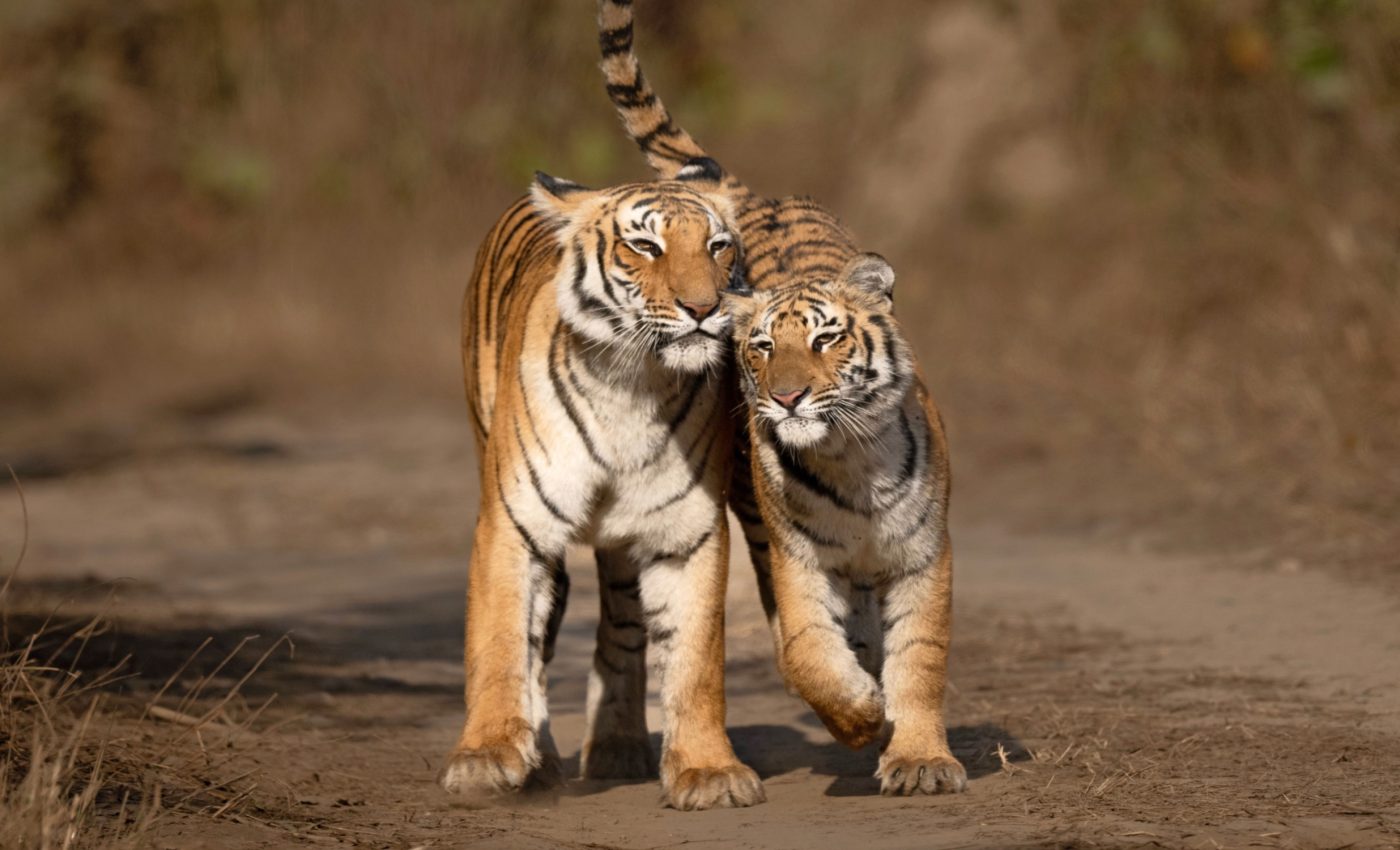
International Tiger Day 2025: Coexistence is possible
Every year on July 29, International Tiger Day highlights a critical conservation challenge: saving one of the world’s most endangered predators.
The celebration began in 2010 at the Saint Petersburg Tiger Summit, with an ambitious goal – double the number of wild tigers. In 2025, India stands out for turning this vision into reality.
India’s tigers are making a comeback
India is now home to an estimated 3,700 wild tigers – about 75 percent of the global population. That’s a 30 percent increase in just two decades.
Unlike regions where tigers continue to vanish, India’s tiger population is growing despite major pressures from rapid development and population growth.
This recovery didn’t happen by accident. India blended science, policy, and culture. While government programs protected land and wildlife, public support grew from a shared respect for the tiger, which holds deep spiritual meaning across many Indian communities.
Tiger conservation efforts across India
India’s approach is unique. Instead of relying solely on national parks and wildlife sanctuaries, the country uses a two-pronged strategy: secure reserves for breeding and open landscapes where tigers and humans coexist. These multi-use areas are not just tolerated – they are part of the plan.
Tigers often roam beyond park borders. In India, that’s expected. Protected zones serve as safe spaces, but it’s the surrounding human-inhabited lands that help connect tiger habitats and reduce isolation. This system gives conservation room to work in real-world conditions.
Living with tigers
In the United States, wildlife and people tend to live apart. But in India, around 60 million people live in tiger zones. Surprisingly, many accept this risk.
Why? Because it works both ways. Farmers receive government payments if a tiger kills livestock. Communities near reserves benefit from eco-tourism jobs. Schools teach kids about wildlife safety and respect.
These efforts turn potential conflict into shared purpose. Tigers are not just seen as threats. They are part of the neighborhood. This level of public engagement is rare – and it’s working.
Tech and volunteers on the frontlines
India uses modern tools like GPS-based monitoring systems to track tiger movement. In areas like Uttar Pradesh, volunteers called “Bagh Mitras” (Tiger Friends) help local authorities respond quickly when tigers wander near villages.
These efforts aim to ease fear, prevent clashes, and keep communities engaged in tiger conservation.
In regions like Pilibhit and Dudhwa, tracking measures have directly supported population growth. It’s conservation that runs on both high-tech tools and grassroots cooperation.
Some regions still struggle
Success is not universal. In parts of rural India affected by poverty or civil unrest, tiger numbers remain low.
Many people rely on forests for firewood, food, and grazing. As land use changes and resources shrink, competition between humans and wildlife increases.
Armed conflict also affects conservation. In areas hit by internal conflict, government presence weakens. This allows poaching and illegal logging to rise. Without stability, conservation falters.
Balancing safety and protection
Despite their fearsome reputation, tigers rarely attack humans. In India, tiger encounters cause around 100 deaths each year, and affected families receive compensation.
Tigers that pose repeated threats are moved to reserves or zoos. This approach helps protect both people and wildlife, showing how a clear response can build trust and prevent backlash – key to long-term conservation success.
International Tiger Day offers lessons
India’s model offers lessons for other countries, including the United States. In places like the Northern Rockies, debates continue about wolves, grizzlies, and ranching.
The U.S. often draws firm lines between human activity and wildlife protection. India shows that there is another way.
“In the past, foraging in the forest was sustainable. But now, with more people and less space for tigers, conflicts are increasing,” said Professor Ninad Mungi of Aarhus University.
In both India and the West, true success may depend on how well people share space with large carnivores – safely and sustainably.
Celebrating conservation across India
On International Tiger Day, events take place across India. Reserves host educational programs. Forest workers and wildlife rescuers are honored.
In states like Jharkhand, new eco-tourism ideas are being tested. Cities like Kolkata and Lucknow run awareness campaigns in schools and parks.
These public celebrations are more than just symbolic. They help build long-term support for conservation – something the US also values in its National Park outreach and wildlife festivals.
Honoring International Tiger Day 2025
International Tiger Day 2025 reminds us that saving predators is possible – even in crowded, complex societies.
India’s journey shows that coexistence, when planned well, can succeed. Cultural respect, government support, and community involvement form a powerful alliance.
As the world faces climate change, habitat loss, and biodiversity decline, India’s experience offers more than a story of national pride. It offers a model the rest of the world may want to study closely.
—–
Like what you read? Subscribe to our newsletter for engaging articles, exclusive content, and the latest updates.
Check us out on EarthSnap, a free app brought to you by Eric Ralls and Earth.com.
—–













